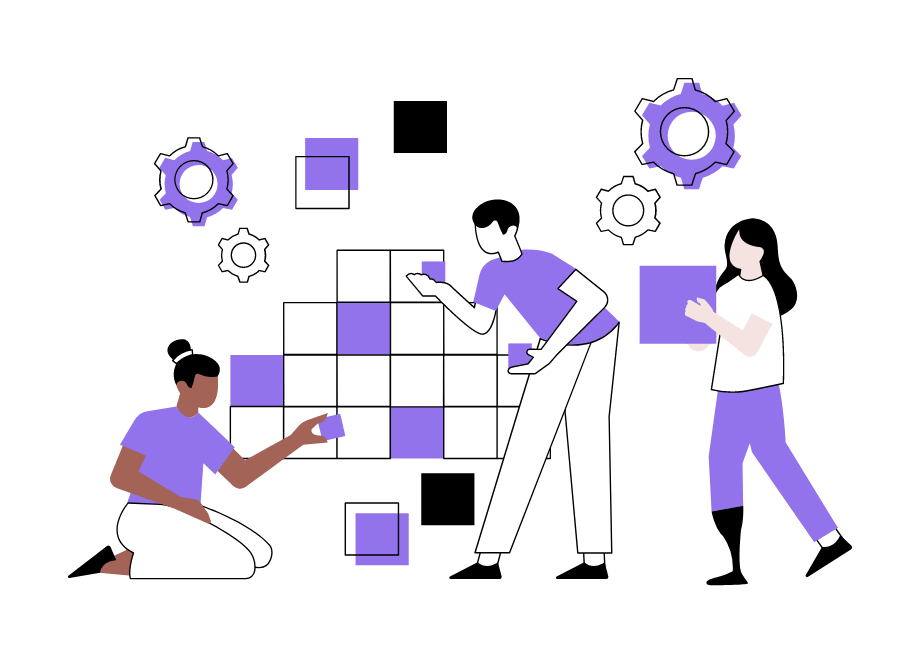
Since onboarding is the first time a new developer sees how your company works from within, you have to seize the opportunity to make an excellent first impression.
With more and more companies realizing that spending the first day at the new job handling paperwork doesn’t make for a great onboarding experience, the process has improved over time.
This article will show you six of the best examples of top companies that strive to create a great onboarding experience for their new developers every time.
Some of them are focused on the onboarding structure, some on the sense of community, but all of them get developers excited for the new chapter in their careers.
Table of Contents
Medium
Medium constantly upgrades the onboarding experience, which makes them an excellent example of a company raising the bar for themselves and other companies operating in the tech space.
For many tech professionals, probably not a day goes by without reading a Medium article. Contributors from all over the world write millions of stories monthly, but there’s a core team keeping the technology up and running.
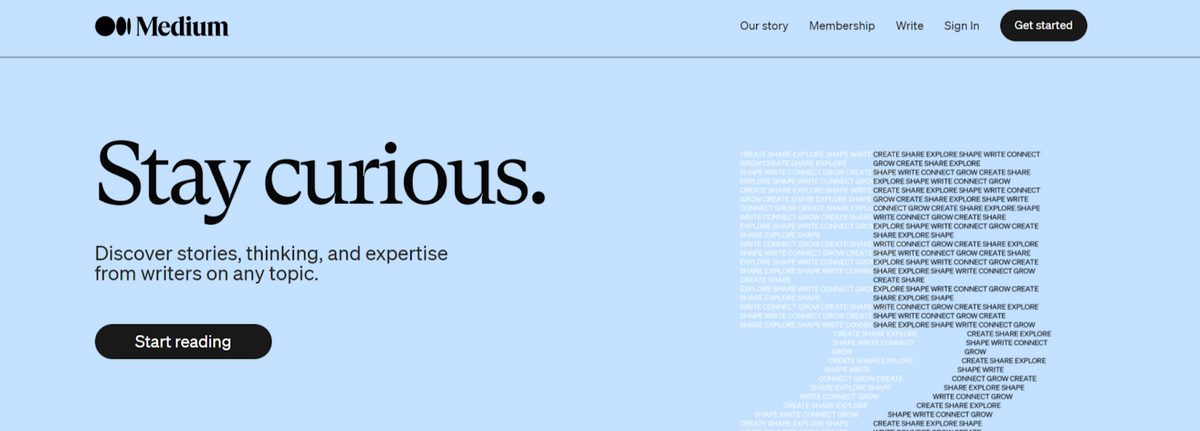
In a way, Medium treats onboarding developers like writing a story. There’s a structure that ensures all elements of the process are organized and nothing is missing.
An efficient way to achieve a structure in onboarding is by using checklists. The following image shows the engineer onboarding checklist used at Medium.
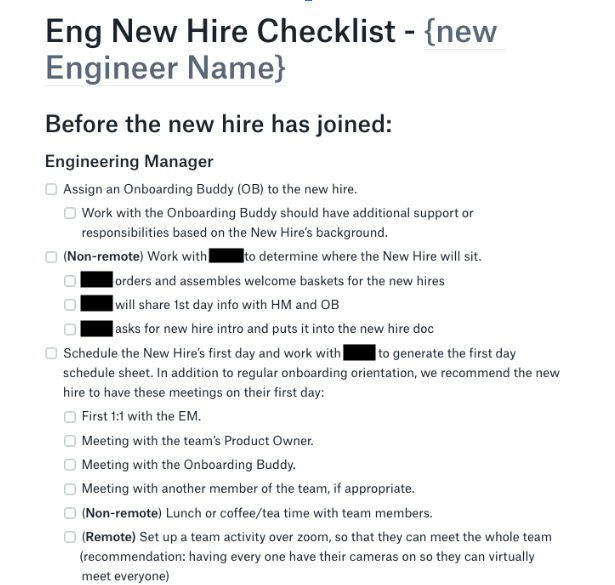
They customize checklists based on the role and regularly update them for increased effectiveness.
However, the hiring manager is not the only one to get a checklist; onboarding buddies get them as well. That way, both management and engineering are involved in the onboarding, providing a more holistic approach.
Besides checklists, Medium also regularly updates their feedback loop to get more accurate insights into how satisfied developers are with onboarding.

Get unreal data to fix real issues in your app & web.
They used to have one survey for all hires, loaded with open-ended questions, resulting in hardly any submissions.
When they created a special feedback form for developers, they were able to collect more precise data and improve the onboarding experience for all future hires in that role.

If you’ve read our guide on creating a developer onboarding process, you remember that hiring is also considered a part of the onboarding.
Medium operates with that in mind and starts building a sense of belonging even before a new hire gets an onboarding buddy.
Shruthi Adappa, a software engineer at Medium, claims that Medium pays more attention to welcoming new hires than other companies.
“The interview process showed me a lot about how this team cares about making sure you feel included, not just that you can code, which is a lot different than how other companies approach hiring.”
Structure, constant upgrades, the social aspect—the onboarding process at Medium covers it all. If you want to create a pleasant onboarding experience for your developers, Medium is a good company to get inspired.
Greenhouse
Leave it to a recruiting software company to nail onboarding! Greenhouse has made it their mission to create a consistent, reproducible onboarding experience.
Not many tech companies publicly take pride in their onboarding practices. The career sections usually deal with benefits, culture, and career development potential. Greenhouse, however, makes it clear that onboarding is as vital as other steps on the path.
Here’s what you see when you open the company’s engineering careers section.
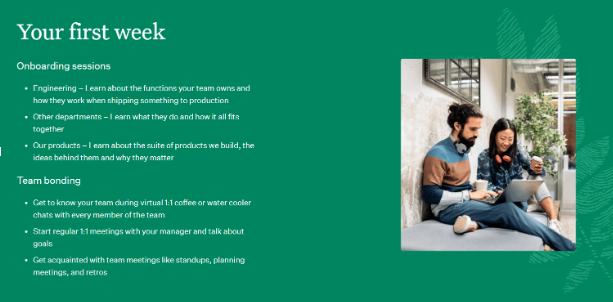
Since onboarding is one of the first career elements Greenhouse describes, you can presume they’ve crafted their onboarding practices with care.
When Aaron Gibralter became Director of Engineering at Greenhouse, he made it his mission to revamp the existing onboarding process.
“Up until that point, we’d fix things in an ad hoc way. […] While that approach works, it doesn’t necessarily scale when you’re hiring a lot at once.”
Motivated by the need for scaling up, Greenhouse decided to create a unified onboarding process that can be used for all developers who join in the future.
The company formed an onboarding committee consisting of engineering managers and recent hires. The committee created a four-step process for revamping the onboarding.
The steps include:
- Defining the onboarding goals
- Thinking of specific actions to include
- Avoiding wasting time trying to reach perfection
- Iterating and improving
Now, Greenhouse has a motivating developer onboarding experience that starts with the first day at the company and lasts for three months or longer.
Such an approach enables developers to get accustomed to the work processes and the community without feeling rushed.
Seeing that Greenhouse aims to build a steady onboarding foundation they can improve over time, it’s not surprising that they’ve decided to collect feedback from their new hires to see how the onboarding is working out.
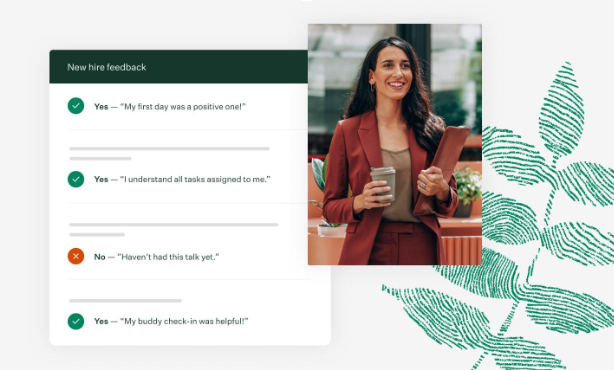
Gibralter suggests collecting feedback through interviews, surveys, or meetings with recent hires.
While qualities such as structure, scalability, and consistency are crucial for onboarding success, you should keep in mind that a new developer doesn’t see any of them directly.
To show appreciation for the new hires, Greenhouse distributes lovely welcome kits.
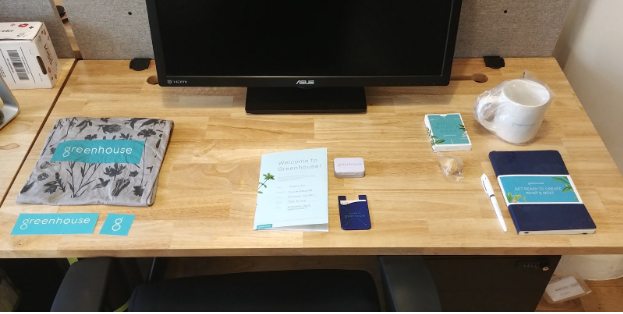
So, to emulate the success of the Greenhouse onboarding experience, you should ensure you’re following a well-structured onboarding process, together with some personalized elements to provide a friendly, welcoming touch.
Asana
When Asana onboards developers, they go out of their way to ease the new hires into the work process. As their engineering manager Greg Slovacek says:
“If you want your new engineers to hit the ground running, give them a soft landing.”
Let’s be clear about one thing: Asana doesn’t use any revolutionary onboarding tools that would set them apart from the competition.
They implement common onboarding elements such as setting up equipment in advance, providing work buddies, getting engineers settled in with starter projects, and they still manage to provide outstanding onboarding experience. So, what’s their secret?
This 26-second video might reveal some answers.
The video shows Rachael Stedman’s first month at Asana in the role of engineer manager through one-second clips.
You won’t see Stedman sitting behind a desk immediately. On the contrary, you can see her getting to know the rest of the team through various activities, ranging from meetings to cafeteria encounters.
Here’s an example of an unplanned event that represented Asana better than all handbooks and company wikis could. In her third week, Stedman walked into a dining area and saw themed decorations and dishes.

While the event wasn’t specifically created for onboarding purposes, it still helped her learn about the company and its dedication to delighting employees every day.
All other developers go through a similar onboarding process, as advocated by Ryan Atkins, Asana’s engineering operations lead.
Atkins also says it’s crucial to assign the new hire a mentor to introduce them to work processes, rather than plunging them into tasks immediately.
“The best way to onboard people is to allow them to gradually wade into the water and slowly expose them to various systems.”
Additionally, teams at Asana always make it a point to celebrate the achievements of recently joined developers. For instance, when Stedman created her first pull request, her teammate left a supportive comment on GitHub to celebrate.

To sum up, Asana creates an excellent onboarding experience by focusing on the new developer as a teammate first, and worker second.
The best thing about this approach is that it doesn’t require any additional funds, so it’s easy to replicate at companies of all sizes.
OneSignal
All is well when you can welcome a new dev into the office and show them where the coffee machine is. But what about onboarding a remote developer? OneSignal is the perfect example that shows you can onboard remote employees just as successfully.
OneSignal, a push notifications service, is not a fully remote company. In fact, they used to encourage office work in San Mateo, New York, and London.
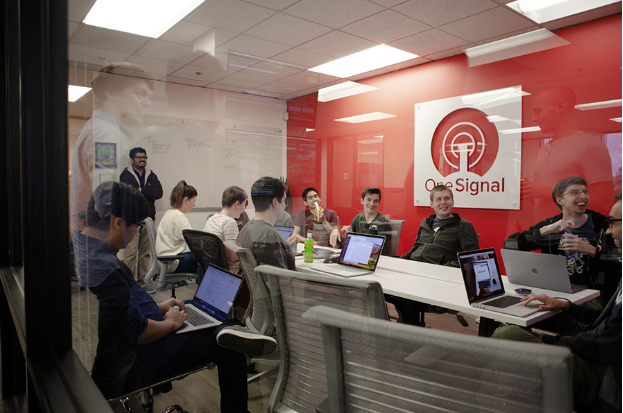
However, COVID-19 has challenged that hiring model. Brett Thomas, an engineering director at the company, claims that he didn’t want to miss out on the best developer talent due to hiring limitations.
“As more engineers realize they can work remotely most or all of the time, I became concerned that we’d be overlooking qualified candidates if we insisted on in-person collaboration.”
The company quickly adapted to the new circumstances, and they now allow all positions to work from office or home.

Despite hiring remotely, OneSignal has managed to keep their excellent onboarding practices.
To keep the onboarding process as organized as it would be in person, the onboarding follows a structured order.
New developers go through technical onboarding and get acquainted with programming documentation, which is always kept up to date.
Since OneSignal takes pride in their company culture, they also make sure that the developer onboarding experience covers introducing the new hire to their assigned buddy, team, management, and other company members.
The following scheme provided by OneSignal shows an overview of the elements of developer onboarding.

Sharing documentation remotely is not too demanding. However, the cultural and social aspects of onboarding can be a bit more difficult to nail.
OneSignal overcomes this challenge by ensuring they include several online meetings in the first couple of weeks with the company.
Here’s an approximate schedule for the initial phase of onboarding at OneSignal.

With all these introductory activities and meetings, the new dev gets to feel like a part of the team regardless of physical distance.
As you can see, the onboarding elements at OneSignal are quite similar to those at other tech companies. By implementing a few organizational tweaks, they’ve ensured the viability of the process, even in a remote setting.
Zapier
If you aren’t sure whether to keep the onboarding technology-oriented or include lots of person-to-person interaction, you’ll be glad to hear that there’s a way to find a balance between the two.
Zapier, an automation tool company, makes sure they warmly welcome new developers to the team while also leveraging technology during the onboarding.
Let’s examine what makes their developer onboarding experience successful, so that you can apply their best practices to your company.
As a fully remote company, Zapier relies on multiple tools for communication, project management, and documentation. You can see the specific tools in the table below.

However, the multitude of tools can sound intimidating to new hires, especially if they haven’t worked remotely before.
This is why at Zapier, new devs get mentors to ease them into the workflow—just one of the benefits of developer mentorship.
Communication with the HR, the mentors, and other team members is a part of the company culture Zapier likes to emphasize.
The company practices communication transparency, meaning that employees mostly communicate via public channels, such as Slack, so that everybody can benefit from the information shared.
Such an open approach to communication, where everyone is welcome to participate, helps with cultivating the team spirit, and constitutes a vital part of onboarding.
Support and openness are precisely the qualities that make the Zapier onboarding experience so successful, as attested by this Glassdoor review of the company.

The employee was amazed by how the team helped them get up and running.
But what if we told you that Zapier goes even further to welcome a new developer?
After week four of onboarding, the company usually flies new employees to California for a week. They work during the day and hang out after work, strengthening team relationships.

Still, there are onboarding activities that don’t require direct communication or supervision, so the company tends to leave such activities to new developers to handle at their own pace.
For instance, the company keeps self-service learning materials prepared so that those who like learning on their own can do a part of onboarding alone.

Capture, Annotate & Share in Seconds with our Free Chrome Extension!
Wade Foster, the company’s CEO, suggests a 50/50 ratio between self-service content and onboarding sessions with other employees because he sees building community as a vital part of onboarding.
With that in mind, if your company has an online knowledge base, there’s no harm in letting new hires browse it on their own.
However, you should supplement the practice with occasional meetings or huddles to keep the conversation alive.
Toast
Creating a pleasant onboarding experience is demanding enough at a regular hiring rate. But when a need arises to onboard more developers, many companies fail to keep up. Toast is, however, not one of them.
This payment processing company for restaurants had to double the size of their development team to support their client base of over 40,000 restaurants.

All elements of the expansion were successful, including onboarding, making Toast one of the examples of providing a great onboarding experience despite the challenges.
In the company’s early days, new Toast developers would get ready to take on their new role by reading a giant Google doc.
As you can imagine, such an unreliable and error-prone practice didn’t do much for the quality of the process, making Toast one of the 88% of companies with poor onboarding procedures.

Luckily, the engineers at Toast built scripts to automatically configure key software and the Toast software stack, creating a more uniform setting-up experience.
Besides streamlining technical aspects, engineers at Toast have also utilized technology to make social onboarding run smoother.
For example, they’ve implemented a Slack bot to help new developers find other company members with similar interests.

These processes freed up significant amounts of time for hiring managers and other staff that would otherwise navigate new devs through the entire onboarding process.
Since scaling up is rarely a straightforward process, Emil Sit, an engineering director at Toast, made asking new hires for feedback his priority.
However, there was a small problem: people mostly didn’t answer his “How is your week going?” emails.
Sit then decided to make answering questions easier and introduced onboarding feedback polls, which now almost everyone answers.

With this tool, management can easily gain insight into the new developers’ impressions of the onboarding experience and adjust it as needed.
All in all, Toast is an excellent example of a company that constantly upgrades their onboarding processes.
If you want the developers at your company to have an improved onboarding experience, you could consider using automated tools to find pain points and act on them. That way, you’ll be able to excel at onboarding whether you hire two or twenty new developers a month.
Conclusion
Onboarding may only account for a portion of somebody’s time with a company, but it still plays a vital role in determining their overall job satisfaction and even performance.
The examples of companies with great developer onboarding experience we’ve listed share certain similarities, such as implementing structured onboarding processes or making sure each new dev finds their place in the team.
Still, each of them has an element of onboarding that takes the experience to the next level.
So, even if you have a good onboarding experience at your company, you could replicate some of these practices and make the experience excellent.
